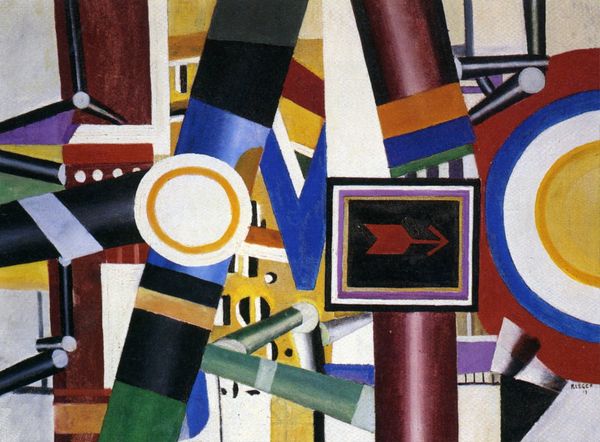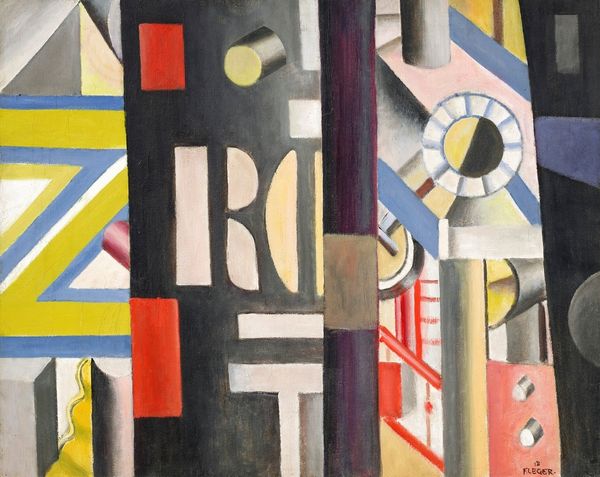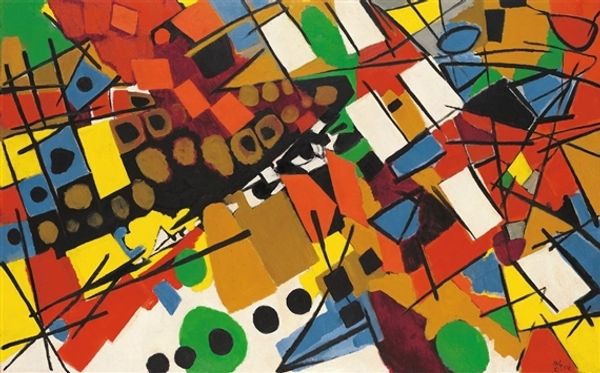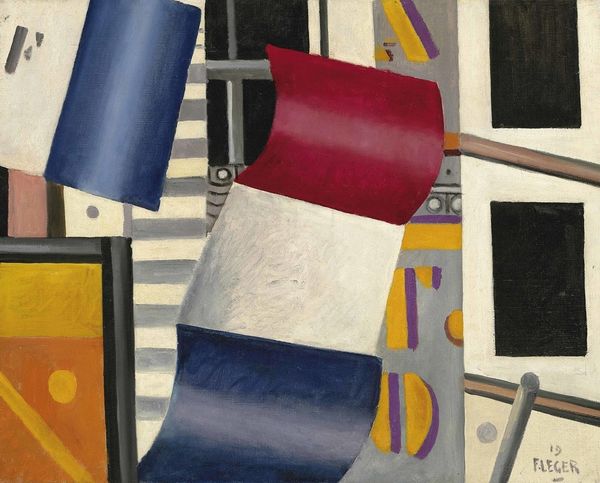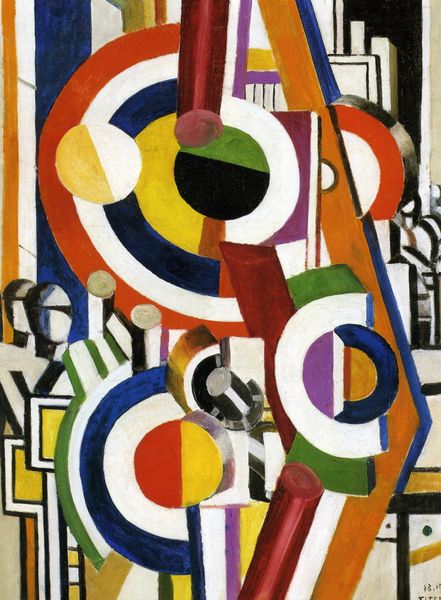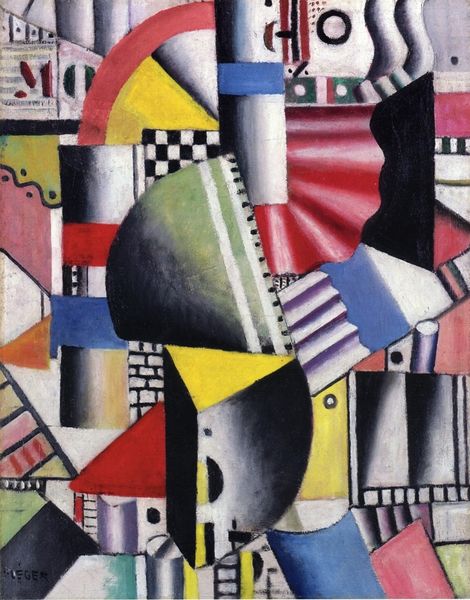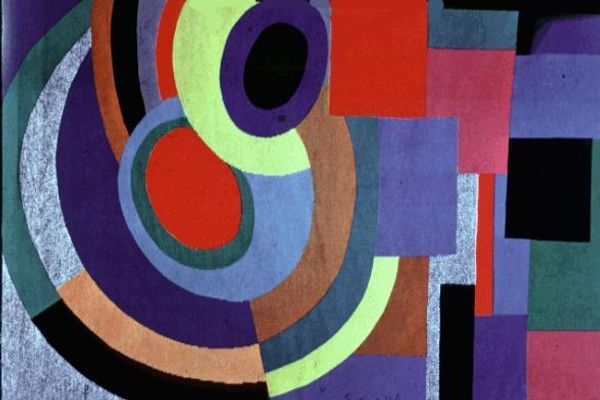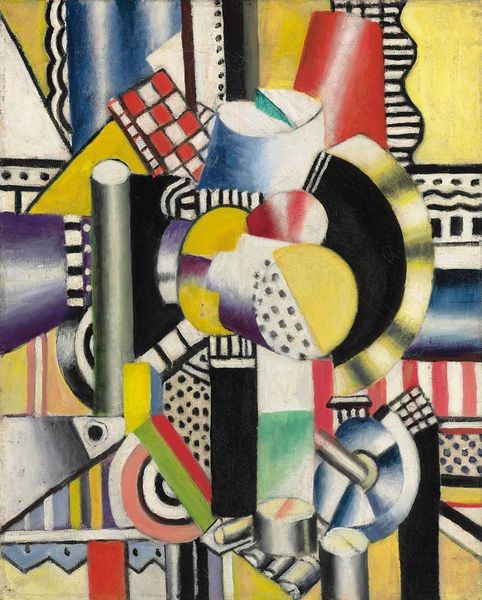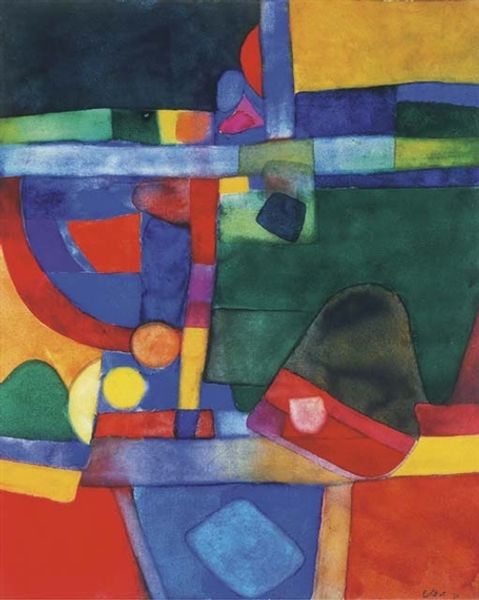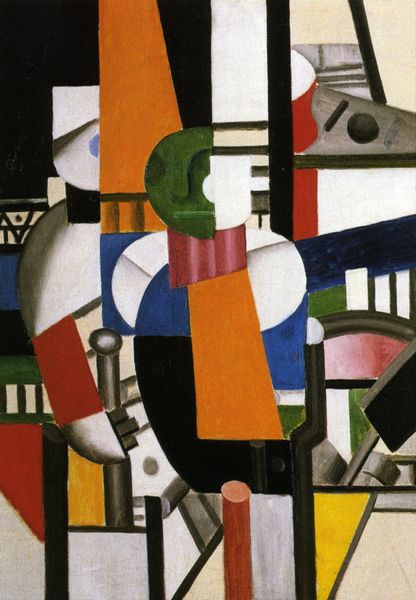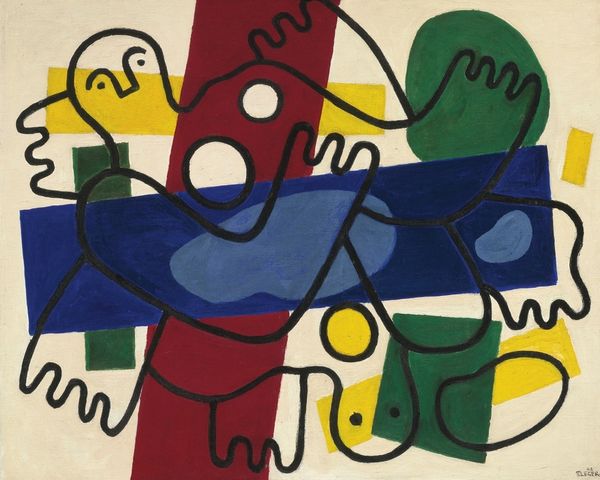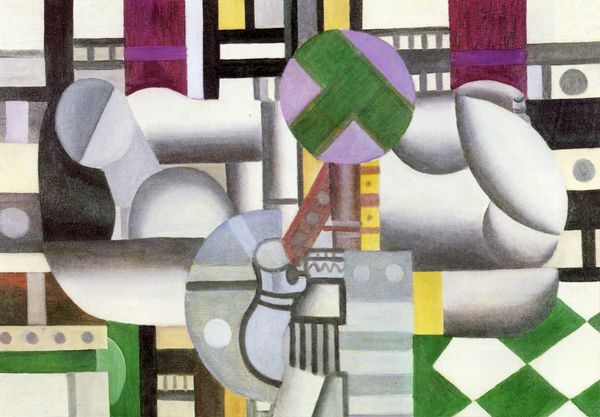
painting, oil-paint
#
cubism
#
abstract painting
#
painting
#
oil-paint
#
pop art
#
painted
#
oil painting
#
geometric
#
cityscape
#
modernism
Copyright: Fernand Leger,Fair Use
Fernand Léger created this oil on canvas painting titled "The Railway Crossing" sometime in the early 20th century. The work presents a vibrant interplay of geometric forms and industrial imagery, reflecting the dynamic changes in early 20th-century society. Léger's painting is striking for its bold abstraction, but it also hints at the social context of its creation. The emphasis on mechanized forms reflects the cultural fascination with technology and urban development during this period. The railway crossing itself symbolizes both connectivity and the potential for disruption. The painting challenges the traditional art establishment by embracing the visual language of the modern industrial world. By incorporating elements from everyday life into his art, Léger questioned the traditional hierarchy between high and low culture. To fully appreciate Léger's vision, we must research the socio-economic history of France during this period. Examining period newspapers, urban planning documents, and political manifestos can provide valuable insights into the cultural landscape. The meaning of art is always contingent on its social and institutional context.
Comments
No comments
Be the first to comment and join the conversation on the ultimate creative platform.
